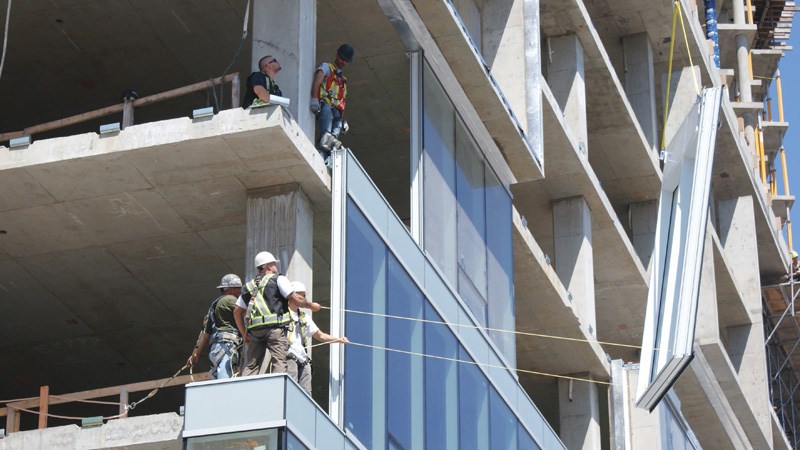Vancouver’s new green buildings rezoning policy, which comes into force May 1, will drive new residential and commercial property prices higher and could change the look of high rise buildings and new homes: think less windows, fewer or smaller balconies and no natural gas fireplaces, industry experts say.
“It is a dramatic change,” said Rod Yeoh, a principal with Dialog Design, which has designed many low-energy buildings, during a presentation on the new zoning bylaw February 9 at the Buildex show in Vancouver.
The new standards becomes mandatory at rezoning, not when a building permit is issued, to allow time for the controversial regulations to be put in place.
The bylaw is part of the city’s ambitious Zero Emissions Building Plan meant to reduce greenhouse gas emissions from new buildings to zero by 2030.
B.C. is responsible for about 0.15 per cent of global greenhouse emissions, according to Environment Canada.
Natural gas fireplaces and cooking elements have been popular in new homes, but only gas derived from renewable sources will be allowed under the bylaw.
But gas from renewable sources, such as from landfills or biofuels, produce less than 1 per cent of the gas used in B.C., according to gas utility FortisBC
“This really means a ban on natural gas for new Vancouver buildings,” said Jason Wolfe, director of energy solutions for FortisBC.
British Columbia is among the world leaders in natural gas production, and natural gas costs about one-third that of electric heat, Wolfe noted.
Concrete balconies, nearly ubiquitous on high-rise condo buildings – and mandated by city building codes in certain neighbourhoods – could also become more expensive.
This is because the concrete extrusions allow too much heat to escape, according to Yeoh. Such balconies would require a thermal break to reduce heat transfer.
If a new condo buyer wants an energy-efficient balcony they would likely have to pay extra for it, explained Anne McMullin, president and CEO of the Urban Development Institute, Pacific Region, which represents mostly high rise condominium developers.
She said the same could be true for floor-to-ceiling windows, also widely used in new condo towers.
The bylaw recommends a reduction in the amount of glazing and requires high-performance frames and triple-pane windows be installed.
It also requires some form of consistent mechanical heat-recovery air ventilation in all living spaces.
Currently, a new concrete condo in Vancouver costs an average of $1,100 per square foot, according to Urban Analytics.
Yeoh told the Buildex meeting the new bylaw could add from 15 to 20 per cent to the cost of a high-rise condominium tower. McMullin said this would equate to at least $10,000 per new condo apartment.
But the new rules could nail even higher costs to new low-rise condominiums, townhouses, detached houses and substantial home renovations, said Bob de Wit, CEO of the Greater Vancouver Home Builders’ Association.
“Any additional cost is a big number,” said de Wit, estimating total new home construction costs have shot up over the past year.
“The cost of lumber is going up because of speculation around the [U.S.-Canada] softwood lumber agreement,” he said, adding that a new tariff on drywall has increased prices 20 per cent; rebar costs have risen; labour is more expensive; and BC Hydro connection costs have increased.
Meanwhile, the cost of residential land has doubled in the city of Vancouver in the past year, according to BC Assessment.
McMullin said that it could be a long time before the new regulations truly hit Vancouver’s development industry because of the current backlog in rezoning applications.
“It can take four to seven years to get rezoning approval in the city of Vancouver,” she said. “It gives some time to figure this out.”



